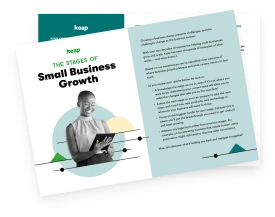A real estate CRM can be a powerful tool. As with any tool, however, the results are only as masterful as the user. There is a lot of real estate training around selling and relationships. So it makes sense that any serious realtor would need a Customer Relationship Management (CRM) system.
In this blog post, you’ll learn how to maximize a CRM for small business from the standpoint of a realtor.
- Powerful CRM Functions
- Automations
Relationship management is the cornerstone to the real estate business
The needs the realtor has are different from a regular business. A realtor has a complex offer to sell.
There are multiple people involved in the transaction and many relationships to manage. How much a realtor makes is directly related to how good they are keeping everything together. In other words, the average salary for realtors is directly related to their average ability to manage relationships.
The most successful real estate professionals understand that technology can enhance relationships and give clients the one-on-one attention they deserve.
Every email, phone call, text message and homing pigeon needs to go into the CRM. Whenever something happens you make sure it gets documented in the CRM, so you don't have to rely on memory or documentation kept in multiple places.
Sync emails
One of the easiest ways to maximize your CRM is to sync your professional email address to your CRM. This way, you don't have to worry about anything other than replying to emails. The system acts like your assistant in the background, keeping track of every inbound and outbound email.
To really maximize the effectiveness of your real estate CRM, reply to emails from within the CRM directly. This minimizes distractions and allows you to focus on the conversation at hand, get a meaningful reply back, and move on to the next thing.
Organize tasks
Another way to unleash the power of your CRM is to leverage the task function. This ensures that nothing slips through the cracks, as all your tasks are kept in one place.
If you really want to get fancy, have your CRM automatically create a task for you when people take certain actions. For example, when somebody fills out the contact form on your website, an automation can create a task for you to follow up with them. Or later in the sales conversation, you can have your CRM create a follow-up task when a contract is signed.
Leverage text messaging
Today, text messaging is as prolific as email. In fact, some realtors use text messaging more than email.
Consumers want to be able to chat with you easily, especially when offers and counter-offers are being exchanged in real time. Text messages also have an insanely high open rate compared to emails, so the likelihood of your message being read is very high.
If you're going to use text messaging or text marketing as a realtor, you need to follow the same best practices as email: Make sure that your text messages are syncing into your CRM. Not only should all messages be in one place, but you should also be able to see a timeline of the communications.
Sync calendars
The most powerful form of communication will always happen in person — so any CRM software for small business you choose needs to also handle your appointments. Like your tasks, you will be able to see your appointments in one place easily, especially if you are driving around or meeting with a variety of people (which you likely do).
To make sure your appointments do not overlap, connect your CRM to your primary calendar. This prevents you from double-booking yourself when offering an appointment time. Some CRMs can even show addresses on a map, so you can plan for the proper drive time.
Another thing that you want to try and do with your CRM is give people the ability to book their own appointments with you. As a realtor, having get-to-know-you calls automatically show up on your calendar ensures that you will always have a steady pipeline of potential new business.
When you can give consumers a link to book a quick call on your calendar, it gives them control of the appointment. They are more likely to show up, because they chose the time that worked best for them.
Nurture leads in a pipeline
Not everything is a one-and-done task.
In fact, most sales conversations in real estate happen over a long period of time. When you're choosing your real estate CRM, make sure there is some kind of pipeline feature to track leads and customers. Not only does this help keep you organized, it allows you to use your time more effectively. For example, if you only have an hour you can focus on people that are in one part of the pipeline to try and push the conversation ahead.
Supercharging your real estate CRM with automation
Most modern CRMs have automation capabilities. This is truly how to unleash your CRM’s full power.
For example, when somebody fills out a contact form on the website, an automation can create a task for you to follow up with them. If you’re using a CRM with pipeline functionality, you can actually have the contact form create a brand-new deal in your pipeline as well.
For even better functionality, you can integrate your CRM with the MLS on your website. So when people inquire about a specific property, that information can be added to their contact within your CRM. Be aware that these kinds of real estate CRM integrations typically require a third-party tool and/or someone to help you make that connection.
Automation doesn't end with the initial inquiry. Not by a long shot.
Book appointments like a super agent
If your CRM can schedule appointments, then you can most likely automate the whole customer experience. For example, after somebody fills out the contact form on your website, you can give them the link to book on your calendar. If they don't book right away, you can send a follow-up email reminding them about your calendar.
Once they book an appointment, you can have the system send a confirmation email and text. You can even send reminders leading up to the appointment, knowing every bit of this information will go into their contact record in your real estate CRM.
Remember the pipeline stuff from earlier? Well, once you have your pipeline stages defined you can now build automation to supplement those stages.
You can also have automations for when client paperwork is out and being signed. When you move somebody into that stage, this could trigger some basic automation that follows up with simple emails and text messages. As soon as the papers are signed and sent back to you, this series of messages can cease.
Manage lists effortlessly
No conversation about real estate CRM software would be complete without talking about the ability to manage various lists. As mentioned in the beginning, there are many people involved in a real estate transaction. To truly unleash the power of your real estate CRM, you’ll want to keep separate lists for various relationships that you manage — not just buyers and sellers. This includes bankers, title companies, inspectors, contractors and so much more.
With various audience segments in your CRM (including text and email exchanges), you can find who you need when you need them, allowing you to make more efficient use of your time. Just don’t forget about automation with these relationships. Follow-up is still needed for these relationships, and automation can help you automatically send important messages that are both personalized and professional.
Broadcast to the right groups instantly
With a real estate CRM at the heart of your operations, you can leverage email and text marketing and broadcasts to specific segments of your database. This is also another reason why you want to be particularly discerning when creating the audience segments. What may be a timely and relevant message for contractors you work with may not be so important for mortgage lenders.
Find a real estate CRM that replaces busy work with business
With the best CRM for small business in your corner, you're ready to get to work.
You understand that a CRM for real estate needs to take all communications and put them into one easy place for you to see.
You get that a CRM needs to help you keep track of tasks to do and the people who need follow-up.
You know that the automation capabilities of your CRM are one of the biggest keys to getting more done in less time.
If you are a realtor looking for a CRM, make sure you find a tool that can do as many (if not all) of these things as possible. Hint: All of this is 100% possible with Keap.
Want to explore if Keap is the best real estate CRM for you? Try a free 14-day trial!
About the Author

Paul started using Keap, then Infusionsoft, in the summer of 2008. By June 2009 he was part of the Certified Marketing Automation Coach (CMAC) program, Keap’s partner program at the time. That lasted until 2011 when he worked for Keap directly in coaching and product until May 2016, at which point he became a certified Keap partner again to serve entrepreneurial small businesses.


